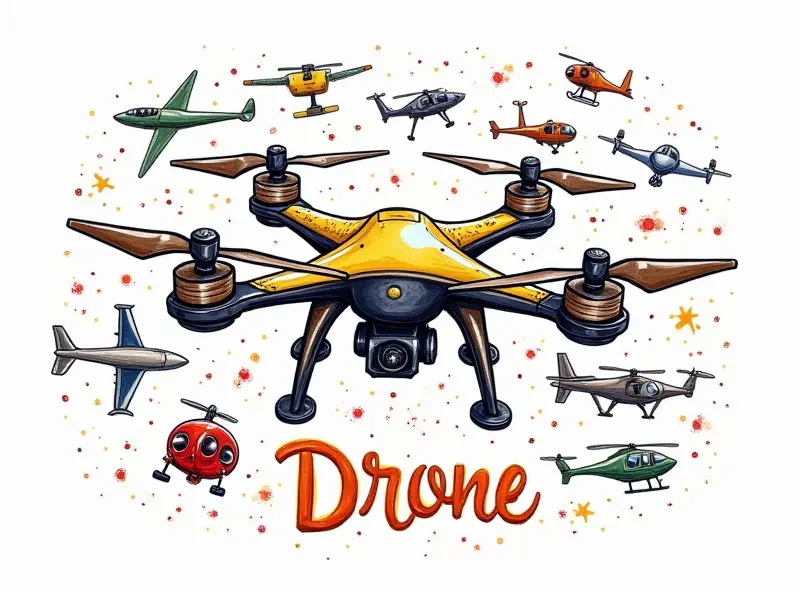RC helicopter safety?

Essential Gear for Safe RC Flying
Ensuring the safety of your RC helicopter starts with having the right equipment. Here are some must-have items:
- Headphones or Earplugs: To protect your hearing from the loud noise generated by the rotor blades.
- Flight Simulator Software: Practice flying in a virtual environment to gain experience and confidence before taking to the skies.
- First Aid Kit: Always have basic medical supplies on hand for minor injuries that may occur during flight operations.
- Range Finder: A device used to measure distance accurately, ensuring you stay within legal flying limits.
Top Safety Tips for RC Helicopters
To ensure a safe and enjoyable experience while operating an RC helicopter, follow these key safety tips:
- Always Conduct Pre-Flight Checks: Inspect your equipment thoroughly before each flight to prevent mechanical failures.
- Wear Protective Gear: Use gloves, goggles, and helmets to protect yourself from potential hazards during operation.
- Avoid Flying Near People or Animals: Maintain a safe distance to avoid accidents that could harm others.
Understanding RC Helicopter Flight Laws
Familiarize yourself with local regulations and guidelines for flying RC helicopters. Key points include:
- Airspace Restrictions: Know the rules regarding airspace usage, especially near airports or restricted areas.
- No-Fly Zones: Be aware of designated no-fly zones to avoid legal issues and safety hazards.
- Licensing Requirements: Some regions may require pilots to obtain specific licenses for RC flying.
Proper RC Helicopter Maintenance Guide
Maintaining your RC helicopter is crucial for its longevity and performance. Here’s how to keep it in top condition:
- Clean Regularly: Remove dirt, dust, and debris from the rotor blades and other components.
- Lubricate Moving Parts: Apply appropriate lubricants to ensure smooth operation of gears and bearings.
- Battery Management: Charge batteries correctly and store them in a cool place to maintain their capacity.
Weather Conditions Affecting RC Helis
The weather plays a significant role in the performance and safety of your RC helicopter. Consider these factors:
- Wind Speeds: Strong winds can destabilize flight patterns, making it harder to control.
- Rain or Snow: Moisture can affect electronic components and reduce battery life.
- Temperature Extremes: Extreme heat or cold can impact the performance of batteries and motors.
Choosing the Safest RC Helicopter Model
Selecting a model that prioritizes safety is essential. Look for features such as:
- Durable Construction: Choose models made with high-quality materials to withstand impacts and wear.
- Redundant Systems: Models equipped with backup systems can provide additional security in case of component failure.
- User-Friendly Controls: Easy-to-use controls reduce the likelihood of operator error during flight.
RC Pilot Training for Beginners
If you're new to RC helicopter flying, proper training is crucial. Consider these steps:
- Enroll in a Course: Take an introductory course from a reputable instructor or organization.
- Practice Regularly: Consistent practice helps build muscle memory and improve your skills over time.
- Learn From Experienced Pilots: Seek advice and tips from more experienced RC pilots in the community.
Preventing RC Helicopter Crashes
To minimize the risk of crashes, follow these preventive measures:
- Master Basic Maneuvers: Gain proficiency in basic flight maneuvers before attempting more advanced techniques.
- Monitor Battery Levels: Keep an eye on battery levels to avoid unexpected power failures mid-flight.
- Avoid Overloading the Helicopter: Ensure that your RC helicopter is not carrying excessive weight, which can affect its stability and performance.
Emergency Protocols for RC Helicopters
In case of an emergency, it’s important to know what actions to take. Here are some essential protocols:
- Abort Flight Immediately: If you notice any signs of malfunction or danger, land the helicopter as quickly and safely as possible.
- Contact Authorities: Report incidents involving RC helicopters to local authorities if necessary.
- Have a Plan B: Always have an emergency landing spot prepared in case you need to make an unplanned descent.
Safe Flying Zones for RC Helicopters
Selecting the right location is crucial for safe flying. Look for areas that meet these criteria:
- Open Spaces: Choose wide-open fields or parks with minimal obstacles.
- No Pedestrian Traffic: Avoid crowded areas to prevent accidents involving pedestrians.
- Adequate Space for Maneuvers: Ensure there is enough room for your RC helicopter to perform various maneuvers safely.
RC Helicopter Battery Safety Basics
Batteries are a critical component of any RC helicopter. Follow these guidelines to ensure their safety:
- Charge Properly: Use the correct charger and follow manufacturer instructions for charging.
- Store Safely: Keep batteries in a cool, dry place away from flammable materials.
- Inspect Regularly: Check for signs of damage or wear that could compromise battery integrity.
Conclusion
Flying an RC helicopter can be an exhilarating and rewarding hobby, but it requires careful planning and adherence to safety protocols. By equipping yourself with the right gear, understanding local laws, maintaining your equipment properly, and being mindful of weather conditions, you can enjoy this pastime safely and responsibly.

